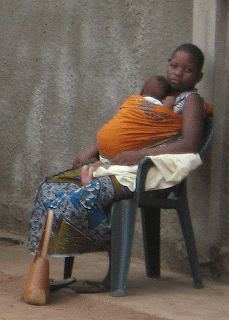Urban Wildlife in Maputo
Everyone has that one thing that freaks the shit out of them. For me, it's rats. I am not completely phobic, but don't ask me to babysit your pet rat when you go on vacation. Mice go into the same category.
So the rat I found hiding under my laundry sink this evening really got my heart racing. It darted out and then rushed back into hiding when it heard my flip flops scuffing along. I caught myself before some high pitched expletives started echoing around the back courtyard of my apartment building.
Rats and humans have been sharing food, disease vectors, and living space for a long time, but it doesn't mean that I have to like it. There is a rat with a white spot on its back that I occasionally spot crossing the courtyard. Really early one morning I caught a young, skinny rat exploring the walkway between my neighbor's and my doors. It looked at me, sniffed, and then continued along the wall. I know that there are other rats, and that is why my doors stay closed even on warm days.
I come by my disgust legitimately. When my brother was 5, he left the door to our home open in the middle of winter (he had just come in from sledding). Two big barn rats decided to set up house in the warm place with food. One took up residence in my closet. For two weeks, all I could hear at night was the rat scratching, trying to get out.
Try telling your dad that there is something in the closet trying to get out when you are 13. Ha! Ha! Ha! I was told to go back to sleep because I was too old for that kind of behavior. After multiple nights of me waking my parents to complain, my dad took our chocolate lab into my bedroom. I don't know exactly how it all went down, but Ginger killed the rat within 10 minutes. It was big. We found the other rat by the smell of its corpse 3 weeks later. It had eaten some poison my dad put out and died in the ceiling of my mom's office/sewing room. Anyway, that's why rats creep me out.
Roosters and guinea hens next door? Noisy, but okay. Spiders? Sure. Ants? Annoying, but fine. The cute little gecko that lives in my sneakers by my kitchen door is more than welcome. Even cockroaches are a-okay. (Chris had some pet Madagascar hissing cockroaches for a while when we lived in Oregon.) I may have been born in the Year of the Rat, but that doesn't mean I have to like rats.























































